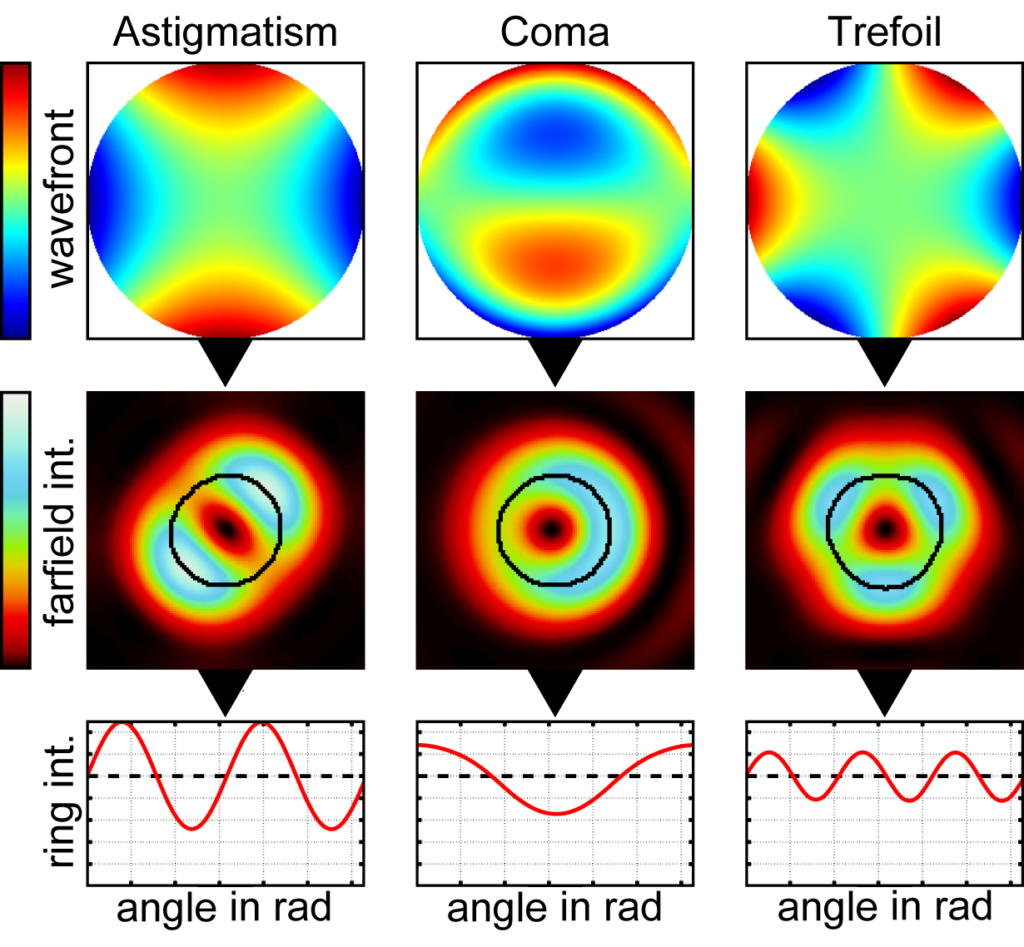An innovative laser beam optimization technique, named “Zernike-coefficient Extraction via Helical Beam Reconstruction for Optimization” (ZEHBRO), has been presented in a recent publication released in the journal “High Power Laser Science and Engineering” by THRILL researchers.
In the pursuit for higher beam quality in Work Package 5 (“Beam Transport and Beam Quality“), the group of researchers has developed this new technique, which promises to significantly enhance the optimization of “donut-like” laser beams in high-intensity applications. These beams feature Orbital Angular Momentum (OAM), which “twists” the light. When focused down, these beams will spiral towards the focal plane like a vortex, generating tiny rings of light. This can be useful in a vast range of novel laser-plasma experiments, like directed laser particle acceleration.

Three examples for the relation between beam distortion and the resulting donut focus, which is used by ZEHBRO.
Limitations of traditional methods
Traditional methods for optimizing laser beams often rely on sensors that are located outside of the experimental chamber and are thus blind to beam defects that happen inside the chamber. Finding the right reference to account for these undetected defects can be challenging and will almost inevitably leave trace amounts of distortions in the beam. Donut-like beams are much more sensitive to these distortions than regular beams, requiring new approaches to beam optimization to guarantee a homogeneous ring-shape in the focal plane and thus the success of cutting-edge experiments.

Image of the focus of a donut-like beam during the analysis using ZEHBRO
The new ZEHBRO approach
The ZEHBRO approach tackles this challenge innovatively by directly observing the focal ring of the beam. This method uniquely exploits the sensitivity of beams with orbital angular momentum to estimate the residual aberrations, reconstructing the focal ring in a live simulation. This allows for a direct optimization, bypassing the complexity speed limitations of existing phase retrieval techniques.
ZEHBRO represents a significant step forward in laser beam optimization, particularly in achieving uniform focal rings in high-intensity lasers, a longstanding challenge in the field. Its successful application at the 100 TW beamline of the Extreme Light Infrastructure – Nuclear Physics (ELI-NP) facility, home to one of the world’s most powerful lasers, is a testament to ZEHBRO’s capabilities and its readiness for broader application.
Download the paper
Ohland JB, Posor D, Eisenbarth U, et al. Zernike-coefficient extraction via helical beam reconstruction for optimization (ZEHBRO) in the far field. High Power Laser Science and Engineering. 2023;11:e86. doi:10.1017/hpl.2023.63
Text: Jonas Ohland


